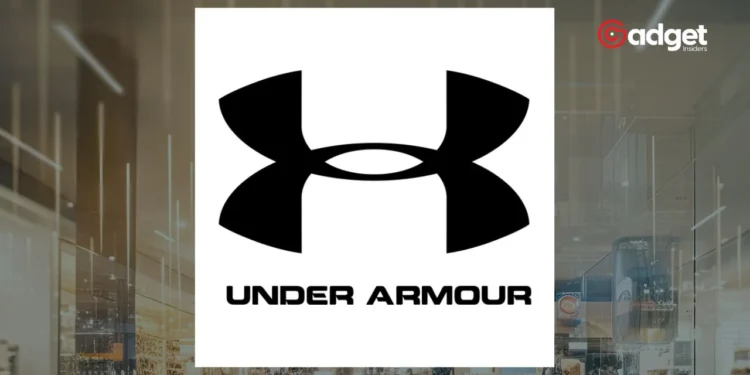Under Armour, a leading name in athletic apparel, is facing a tumultuous period as it grapples with a significant sales slump in its principal market, North America. The brand announced a comprehensive restructuring strategy aimed at revamping its operations and restoring its competitive edge.
This move comes in response to a sharp 10% drop in North American sales, with expectations of a further decline. Founder and CEO Kevin Plank attributes this downturn to multiple factors, including decreased demand in the wholesale channel and uneven business execution.

A Closer Look at the Financial Strain
Under Armour’s financial health has taken a severe hit, evidenced by a dramatic 96% decrease in profits during the fiscal fourth quarter compared to the previous year. The company’s revenues have also dipped, falling to $1.33 billion, a 5% decrease year-over-year. Despite meeting Wall Street’s revenue expectations, the North American market’s performance was particularly disappointing, with sales dropping to $772 million against the anticipated $780 million.
Restructuring for Resilience
In a bid to counteract these challenges, Under Armour has unveiled a broad restructuring plan, projected to cost between $70 million and $90 million. This plan includes layoffs, although specific numbers remain undisclosed. The expenses are partly allocated for severance and benefits for the affected employees.
Despite initial market reactions that saw share prices plummet, there was a slight recovery post-earnings call, indicating investor anticipation of a possible turnaround.

Kevin Plank explained, “Due to a confluence of factors, including lower wholesale channel demand and inconsistent execution across our business, we are seizing this critical moment to make proactive decisions to build a premium positioning for our brand, which will pressure our top and bottom line in the near term.”
Strategic Focus and Operational Streamlining
Under the new leadership direction, Under Armour is set to decrease its product variety by approximately 25% and aims to accelerate its product development cycle from 18 to between 6 and 12 months. This initiative is part of a broader strategy to enhance operational efficiency and focus sharply on core product lines, primarily men’s apparel.
“Over the next 18 months, there is a significant opportunity to reconstitute Under Armour’s brand strength through achieving more, by doing less and focusing on our core fundamentals,” Plank stated. The company’s plans include reducing promotions and discounting, which are expected to improve the gross margin by up to 1 percentage point throughout the fiscal year.
Two of Pennsylvania’s best go 1v1 at the Under Armour Next New Jersey camp.
2027 OL @HillerMaxwell vs. 2026 DT @Cambrickle
👉 https://t.co/70wtgCYzhN pic.twitter.com/LoA4uA41ku
— Happy Valley Insider (@PennStateRivals) May 9, 2024
Leadership and Future Outlook
This strategic overhaul follows a period of leadership instability, with Stephanie Linnartz stepping down from the CEO role after less than a year, marking the second CEO departure in under two years. Kevin Plank’s return to the helm is seen as a move to stabilize the company and refocus on its foundational strengths. Plank’s candid reflection on past missteps, particularly the shift away from core men’s apparel, which he believes has commoditized the brand, underscores a renewed focus on this segment.

Under Armour anticipates a challenging fiscal year ahead with projected sales declines between 15% and 17% in North America. However, the adjusted earnings per share are expected to range from 18 to 21 cents, in stark contrast to analyst expectations of 52 cents.
Conclusion: A Pivotal Moment for Under Armour
Under Armour is at a pivotal juncture, facing both market adversities and internal challenges. The comprehensive restructuring, while painful in terms of layoffs and financial cost, is deemed necessary for the company to regain its footing and strengthen its market position. As it moves forward, the company’s ability to streamline operations, focus on core products, and stabilize its leadership will be critical in navigating through these turbulent times and setting the stage for future growth.










